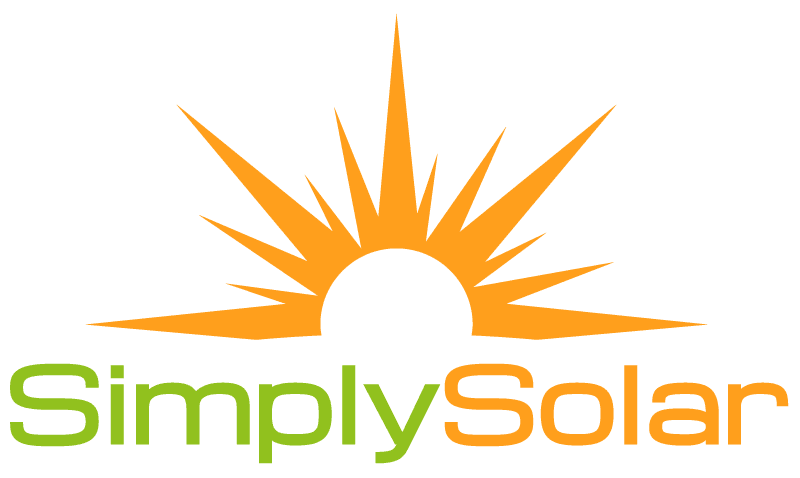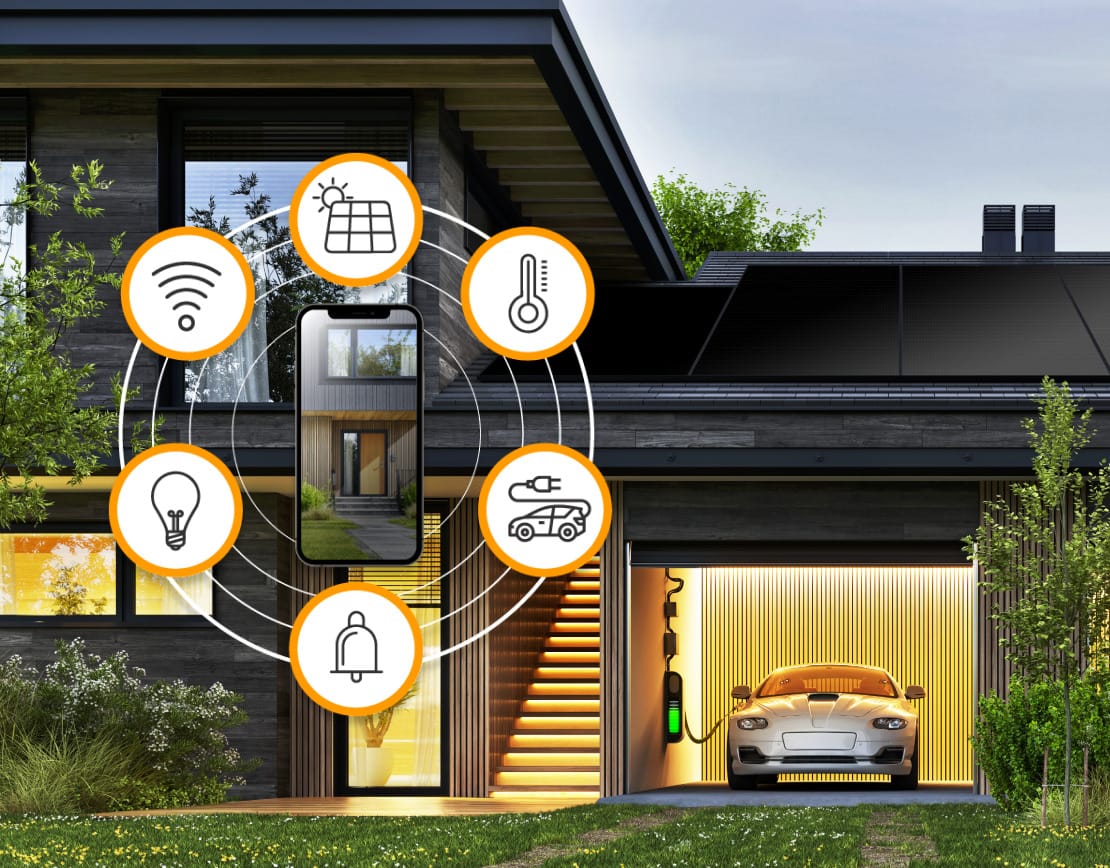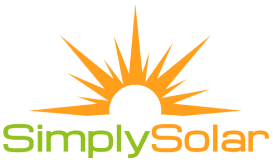Do you want to save the planet and your electric bill? Commercial solar energy systems can shave 75% off your energy costs. A residential system can pay for itself in as little as 8 years, according to EnergySage.
Many people are wary of solar energy installation with its high upfront cost. They want to make sure they’ll get a good return on investment (ROI) before committing.
Simply Solar takes pride in our hands-on team bringing renewable clean energy to the Bay Area. Your confidence in making the most informed decision about solar energy is part of our commitment to you.
We’ve provided a guide to understanding solar energy costs and benefits, so you can get the best ROI from your solar panel installation.
What is Return on Investment?
ROI is the measure of profit from an investment. If you invest $1,000 in the stock market and make $2,500 from the sale of stock, your profit is $1,500 and your ROI is expressed as a percentage: 150%.
Home, business, and property improvements are not quite as straightforward. The ROI has to calculate many factors, like the cost of installation, maintenance, repairs, and labor. It also considers market value and energy savings.
Currently, the best short-term home improvement is replacing a garage door at 93.8% ROI. This means the average cost to replace a garage door is $3,907, and it adds a resale value of $3,663.
But this average ROI may or may not apply to your home.
You may get a lower or higher resale value. Your installation cost may be cheaper or more expensive. Your new garage door may be defective with no warranty, so you have to pay to repair or replace it.
Solar energy installation is a long-term investment with a potentially high ROI. Your initial ROI will be low until the system pays for itself.
The energy savings and added home value can potentially equal ROIs as high as 200%, especially in sunny areas like the California Bay Area.
Solar Panel Installation and Your ROI
The installation cost depends on the company you choose and the solar energy system size. Your roof can be a cost element too.
It’s important when maximizing your ROI not to sacrifice quality or cut corners. Because your ROI is long-term, added long-term expenses from shoddy panels or improper installation will negate your short-term savings.
To get the best ROI from solar energy installation, you have to consider:
- Installation cost- including labor
- The project size
- Getting the property ready for installation
- Warranties and insurance
- Financing costs
Making the right solar energy choices for your home or business will bring the highest ROI.
A solar energy system should be high-quality and properly installed by experienced pros. It should also be tailored to your specific needs and wants.
1. Selecting a Solar Energy Company
Whether you’re shopping for residential or commercial solar, finding a quality solar panel installation company is the same process.
There are many factors to look for in a first-rate company:
- Licensing and Certifications such as NABCEP
- Credibility (reviews, ratings, referrals)
- Experience
- Flexibility
- Seller tactics (predatory loans, strong-arming)
- Quality products
- Warranty offers
A good solar energy company checks all of these boxes and doesn’t sacrifice one for the other. A compromise in any of these categories will take a sizable chunk from your ROI.
If you sacrifice licensing, credibility, and experience, there’s no guarantee your solar panel installation will be safe, effective, or properly installed.
If you compromise on flexibility, you’ll end up with a solar energy system that gives you little personal benefit.
Shady solar energy companies will try to pressure their customers into signing contracts right away or accepting predatory loan terms. A quality company will determine if solar energy is even practical for you.
Good-quality solar panels will last 25-30 years with routine maintenance. But low-quality panels average a 5-10 year lifespan. Not only does their performance degrade faster, but they are also more susceptible to wind, weather, and debris damage.
A reputable solar energy company will also explain what warranties you'll get and what's covered under its terms.
2. Solar Energy System Size
Solar panel system costs are calculated per kilowatt (residential solar panel) or megawatt (commercial solar panel). The size of the system depends on:
- The building or home size
- Its average energy use
- The local climate
- Roof orientation and size
There are ways to optimize these factors for better ROI.
Building size is only a small part of solar energy installation and not the most important factor. Two similar size buildings can have very different energy usage, climate, and direct sunlight.
You can lower your average energy use if you protect against energy loss. Some easy ways to reduce energy loss are:
- Proper insulation
- Modern HVAC systems
- Energy-efficient lighting and appliances
- Eliminating "energy vampires"
- Smart thermostats
- Sun blocking screens or window coverings
You can’t change your climate or roof orientation. But you can make adjustments like clipping back trees, getting creative with panel placement, and using micro inverters or power optimizers as your inverter.
Commercial solar designs include installing many panels on tilt arrays, ground mounts, or canopies to get more direct sunlight.
3. Roofing and Solar Panel Installation
Different roof types are more suited to solar panels than others. And adding solar panels can make small roofing problems into big roofing problems.
Roofing problems to address before solar panel installation include:
- Structural integrity
- Dry rot
- Water run-off
- Shingle repair/replacement
- Debris build-up (overhanging tree branches, leaves)
- Fungi patches and streaks
A roofing assessment by a professional will be an added cost, but it could save you thousands. So will small repairs and upkeep.
If your roof collapses after the solar panel installation, you’ll have expensive roof repairs on top of your solar investment costs. And there will be nothing to show for it except a big hole where your roof, solar panels, and ROI should be.
The average cost of big roof repairs is $7,000. The cost of small routine repairs is only $150-$400.
It’s a much more lucrative investment for your roof to be in tip-top shape before solar panel installation.
4. Solar Energy Warranties and Insurance
Without a warranty, you’re liable for the costs of defective equipment and parts. Warranties can be through the manufacturer, or the installer, or both. Warranties include coverage for performance, workmanship, and equipment (product/parts).
The performance warranty covers solar panel efficiency. If a solar panel output drops below a certain baseline, your warranty will cover it.
Most warranties offer 80-90% output after a certain time, according to EnergySage. Or the warranty will set a maximum degradation rate, like 10-20% over the panel’s lifespan, or around less than 0.3% a year.
The product warranty will cover certain solar energy system parts. This can include:
- Panel frames and covers
- Photovoltaic cells
- Wiring
- Inverters
- Batteries
- Mount systems
A workmanship warranty covers the solar installation labor. Solar energy systems are complex and involve wiring electrical inverter(s) into the existing electrical system.
A faulty or improperly installed converter will short-circuit your ROI and your solar system very quickly. If there’s no warranty on the inverter, you’ll pay out of pocket for poor work.
All warranties are subject to terms, so you should know what’s covered and for how long. Warranties can be from 5-10 years or cover the panel’s entire projected lifespan.
Some homeowners insurance can include solar energy system coverage. For commercial solar, commercial property insurance can cover certain items.
Your insurance agent should help you determine your solar energy coverage.
5. Solar Energy Financing
Not everyone can pay the total upfront cost in cash, especially for commercial solar energy systems. A solar loan or solar lease are finance options similar to a car loan or lease.
Both options have pros and cons. The trade-off between owning the system or leasing it can affect your ROI, but you have to determine which option is best for your needs.
Solar Energy Loans
A solar loan means:
- You own the solar energy system.
- You’re responsible for any issues not covered by warranties or insurance.
- You're rarely offered an energy production guarantee.
- You can apply for solar energy incentives, rebates, and credits.
- You increase your commercial property/home market value.
- You pay less money over time in financing costs.
A solar loan seems like it has only a couple of drawbacks, but they’re significant. Commercial solar is especially vulnerable to costly system issues.
You’re responsible for routine maintenance so you don’t void the warranty. And you’ll pay for anything outside the warranty and insurance, like shipping and labor costs to replace an entire panel.
You can also have a panel efficiency warranty, but no guarantee on the actual energy production. They usually go hand in hand. But if they don’t, it generally won’t be covered by warranty.
You can also pay thousands in financing just to discover your commercial solar panel production is too low to give your company significant savings.
Or you can buy a home system and still have almost the same electric bill before solar energy installation.
Solar Energy Lease
A solar lease means:
- You don’t own the solar energy system.
- You’re not responsible for any issues.
- You're more likely to get an energy production guarantee.
- You cannot apply for solar energy incentives, rebates, and credits.
- You do not increase your commercial property value/home market value.
- You pay more money over time in financing costs.
Like a car lease, a solar lease lets you pay to use the system instead of buying it. This lets you off the hook for maintenance and repairs.
You’re also more likely to get an energy production guarantee because the lease isn't as attractive without it.
But if you want to increase your property value through solar energy installation, you won’t get it with a lease. The leasing company takes back everything after the lease is up.
You also pay more total after the lease is up than if you used a loan. And you won’t get any incentives and credits to lower the system cost.
This could negatively affect your ROI as much as potential repairs and maintenance.
Other Factors for Your Solar Energy ROI
Taking advantage of solar energy perks can lower the overall cost of installation by a few hundred to a few thousand dollars. The system pays itself back faster, with a higher ROI over a longer timespan.
Like most home improvements, your ROI will depend on increasing market value. For commercial solar, the energy savings will typically be the ROI's powerhouse.
Solar energy systems give continuous value with energy savings. And if you qualify for net metering, the potential savings increases even more.
1. Solar Energy Incentives, Credits, and Rebates
Solar energy perks are a great way to lower your total cost and increase your ROI. From federal to local, there are many programs to help you pay for solar energy installation.
Federal Solar Energy Credits
Solar energy installation is eligible for a federal tax credit. The current residential rate is 26% for complete installation. To be eligible:
- You must own the solar energy system.
- It’s the original installation.
- The system is installed before Dec. 31, 2023 (unless the credit is extended by Congress).
- The system is located at your residence or is for a community project.
For commercial solar energy installation, the corporate tax credit rate is also 26%. The eligibility requirements are:
- The business pays federal taxes.
- It’s located in the U.S. or its territories.
- Most of the equipment is new.
- It’s not used to heat a swimming pool.
Another federal program that boosts commercial solar savings is the Modified Accelerated Cost Recovery System (MACRS). This program offers a five-year cost recovery period for solar energy through tax deductions.
When added up, these benefits can save businesses thousands in solar energy installation.
State Solar Energy Incentives
California has an incentive program for helping low-income families install solar energy: the Single-Family Affordable Solar Homes (SASH) program.
The SASH incentive is $3 per watt. It’s available to homeowners who live in public-qualified affordable housing, with a household income less than 80% of the area median income.
For commercial solar, the USDA also offers the Rural Energy for America Program, which gives grants that cover 25% of project costs, or loans for 75%.
It’s eligible for agriculture industries and rural businesses. While it's a federal program, you apply through local and state agencies.
Solar Energy Rebates
California offers the Self-Generation Incentive Program (SGIP) for both residential and non-residential applicants. It gives rebates for solar energy storage systems.
The incentive depends on your qualifying category. For example, the Equity Resilience category maxes out at $1,000 per kWh.
Solar energy rebates aren’t offered by Pacific Gas and Electric (PG&E), Southern California Edison (SCE), and San Diego Gas and Electric (SDG&E). But other local cities and utility companies may still offer one.
2. Solar Energy Net Metering
Net metering is a great way to even out your energy costs. Net metering allows you to credit excess solar energy back to your electric grid. California is currently on its second net metering program, NEM 2.0.
Important things to know about NEM 2.0:
- There’s no cap on installation size wattage.
- Only PG&E, SCE, and SDG&E participate.
- The program requires time-of-use electric rates (higher rates during peak demand).
- It has an interconnection fee.
- You still pay non-bypassable charges.
With net metering, you can bump your solar energy savings to an average 22-36 cents per kWh, which can potentially save you around $200 per month on energy costs.
Net metering and Commercial Solar Energy Systems
You may be able to benefit from net metering designed for your industry. California has net metering programs specifically for commercial solar. These are:
- Virtual Net Energy Metering (VNEM)
- NEM Aggregation (NEMA)
- Renewable Energy Self-Generation Bill Credit Transfer (RES-BCT)
- NEM Fuel Cell (NEMFC)
VNEM is for commercial properties with multiple meters managed under one account, like an apartment building or housing complex. This program ensures an even distribution of solar energy under one system, with excess energy transferred back into the grid.
Similar to VNEM, NEMA puts multiple meters under one energy surplus system, but this applies to different properties under one system. This is especially useful for agriculture industries with spread-out facilities.
RES-BCT allows government and university properties to use surplus solar energy for other buildings they own. NEMFC applies to industries that use fuel cell generators.
3. Residential Solar Energy Installation and Property Value
Calculating the market value of a property is subject to inevitable market fluctuations and local area aspects. But you can make a general estimate of how much solar energy installation will increase it.
For homeowners, one research study from Appraisal Journal estimates for every dollar saved in annual energy, the home value goes up by $20.
If you save $2,000 a year with solar energy, that’s $40,000 added to your home’s market value. And the more money you save on solar, the greater the market value. It’s a win-win.
The Lawrence Berkeley National Laboratory used the formula $5,000 for every kW of the solar energy system. The average size for residential homes is 5-6kW, which equals $25,000-$30,000 in added value.
The cost of solar panel installation varies, but if you pay an average of $13,000 for a 6kW system, your estimated base ROI is already at 130%-200% depending on how much market value is added.
Another way to increase your market value is recorded proof your solar energy system is high-quality and installed by a reputable company.
This way buyers and sellers can verify your solar energy system is a legitimate benefit.
4. Commercial Solar Energy Installation and Company Value
Commercial solar adds business value and property value to your company.
The business value comes in the form of advertising and other green energy benefits. And like a residential installation, the commercial property value also goes up.
The energy savings are also comparatively much higher than residential, even if they don’t eliminate electric costs completely.
Solar Energy Business Value
According to a Pew Research survey, 72% of people worldwide are concerned about climate change, and 80% are willing to make changes to reduce it. A green energy company increases its marketability to the public.
If a climate-concerned customer is deciding between your business and a non-solar alternative, green energy might be the deciding factor for choosing your services.
You can also increase your community standing by reducing local area pollution.
Solar Energy Commercial Property Value
Commercial property value with solar energy hasn’t been studied yet, like residential. But you can use the residential formula as a conservative estimate.
Using the Appraisal Journal formula, if your business saves $6,000 a year in solar energy, you add $120,000 in commercial property value.
If you paid $50,000 for a 25kW commercial solar panel installation, you gain $70,000 back for an ROI of 140%. Without including the 75%-90% savings in energy costs per year.
If you use the Lawrence Berkeley formula, a 25kW solar energy system will add $125,000 in value. Your ROI will go up to 150%.
Adding together commercial property value, business value, and energy-saving costs, a commercial solar energy installation could net your business an extra few hundred thousand per year and per market value.
Solar Energy for Your Savings and a Brighter, Cleaner Future
Maximizing your solar energy ROI is a careful process. Whether it’s commercial solar energy systems or residential, we’ll get you the best return for your investment.
Simply Solar brings you high-quality service and products that are custom-built for you. To find out more about our resident or commercial solar panel installation, contact us today! Our in-house advisors are waiting happily to assist you.



